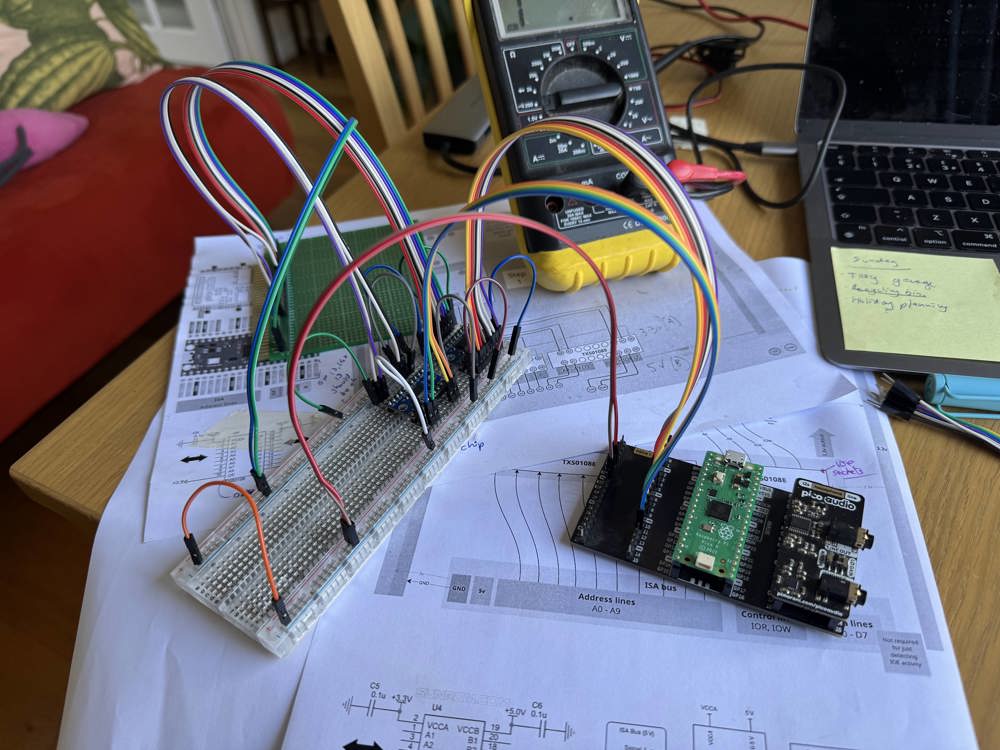
A few years ago a device called the HDD Clicker was released into the retro community as a enhancement for retro computers that have solid state devices to restore some of the nostalgic sounds that using modern enhancements remove.
When I heard about that device it made me wonder if a more advanced simulation of old mechanical hard drives could be recreated using a Pi Pico playing back recordings of an actual drive. So I put together a little proof of concept.
Although this wasn't connected to a computer, it demonstrated that a realistic replication of a mechanical HDD spin up and then randomly accessing data could be replicated using an Pi Pico with the addition of an Pico Audio Pack
The next step was to actually put it inside a computer mounted onto an ISA card. This would enable me to use the ISA 5v rail to power the Pico itself directly from the PC.

So after a little soldering I had the chips mounted on an ISA card along with some headers which allowed the PC HDD activity LED line to be connected to the device. The Pico would detect the change in voltage and then react by playing back the HDD access sound.
It worked!
This was effectively the same approach used by the HDD Clicker, being hooked up to the HDD activity LED line. Quite a simple approach that would work in most computers.
However after speaking with Ian Scott of PicoGUS fame he suggested that I could go a step further by monitoring the ISA bus for HDD activity which would make it a truly plug and play device.

He suggested using the TXS0108E level shifter, which converts the ISAs 5v signals to the 3.3v needed by the Pico. This would then allow the Pico to safely monitor the address lines of the ISA bus which show when a specific address (such as the HDD) is being read or written to.
Use of the IOR and IOW lines in addition give information about whether it is a read or write operation.

So after some research and online purchases I finally had all the components required to build a prototype device and see if I could monitor the ISA bus activity of my 386.
It's quite a thing to plug in a hand crafted device into a valuable vintage computer. Would it cause a short circuit and destroy my beloved retro machine?
After several checks of the wiring by eye and with my multimeter I finally felt ready to turn on the PC to see what would happen



